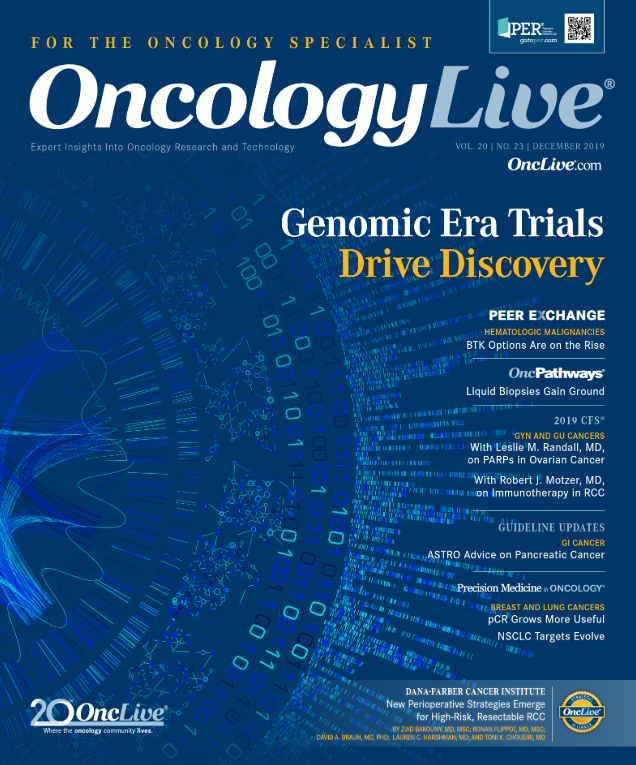Healthcare "Hot-Spotting" Generates Big Savings in Oncology
Focusing on the needs of patients with cancer who were likely to be “superutilizers” of healthcare resources resulted in lower costs, fewer hospital admissions, and higher patient satisfaction scores for Crystal Run Healthcare.
Manuel C. Perry, MD, Manuel C. Perry, MD

Manuel C. Perry, MD
Focusing on the needs of patients with cancer who were likely to be “superutilizers” of healthcare resources resulted in lower costs, fewer hospital admissions, and higher patient satisfaction scores for Crystal Run Healthcare. The New York State provider saw an annualized savings of $600,000 in a cohort of 600 patients treated through the practice’s Oncology Care Model (OCM).
Crystal Run’s strategy is an example of healthcare “hot-spotting,” Manuel C. Perry, MD, division leader for oncology and hematology and director of the OCM at Crystal Run, explained in a presentation during the 2019 American Society of Clinical Oncology Annual Meeting.
“Healthcare hot-spotting is the strategic use of data to reallocate resources to a small subset of high-needs, high-cost patients in order to improve health and reduce costs,” Perry said.
The multispecialty group practice, which treats approximately 1500 new patients with cancer every year, was motivated to pursue hot-spotting as a result of study findings about costs associated with superutilizers of healthcare resources. Results from 1 study in an oncology system showed that 5% of patients accounted for 50% of the healthcare dollars spent, Perry noted.
“Our in-patient admissions were rising steadily, so we developed the hot-spotting strategy to target potential superutilizers,” he said. “We wanted to stratify patients prospectively, using known comorbidities associated with high utilization, so that enhanced services could be offered to them.”
Beginning in 2017, nurse practitioners (NPs) began prospectively screening patients who were scheduled to receive cytotoxic, targeted therapy, or immunotherapy for 10 risk factors, including stage IV solid tumor disease, congestive heart failure, dialysis or renal failure, myelodysplastic syndrome or acute leukemia, or a hospital admission in the previous 6 months.
“We wanted to increase the frequency of communication with patients who were deemed to be high risk,” Perry said. “We also wanted to facilitate the coordination of care with primary care providers and selected specialties. We thought the best time to implement a screening protocol was during the patient orientation visit with the nurse practitioner that takes place whenever a patient starts treatment or has a change in treatment.”
Table. Successful Interventions for Reducing Superutilization
Ten percent of all OCM patients were hot-spotted as likely superutilizers. NPs called those patients twice a week from 8 to 10 am to ask about their health and offer same-day medical appointments if the patient had developed a new problem that required intervention or had a chronic problem that was getting worse (Table).
“If there was a problem, they would get them in to be seen that day or get them in to see a specialist,” Perry said in an interview with OncologyLive®. “Our experience was that a lot of patients had problems leading up to this that they wouldn’t necessarily tell anyone about, so the nurse practitioners would coax this out of them so that it could be taken care of before they actually needed to be admitted.”
Crystal Run found that in-patient admissions decreased from 21.3 to 18.7 per 100 OCM beneficiaries over 4 consecutive quarters, representing a 12.2% decline from its peak level, Perry said. He noted in-patient costs dropped from $979 to $885 per beneficiary per month, a 9.6% decrease from peak costs (Figure).
At the same time, the system’s overall patient satisfaction scores increased from the 42nd to 50th percentile to the 81st to 90th percentile.
Perry said that the program was designed to work within the existing practice framework to minimize disruption. The intervention did not require intricate technology or a great deal of training— essentially, his team required only the use of telephones. He added that building trust and facilitating access were key to the program’s success.
The program is being updated to employ licensed practical nurses (LPNs) for the check-in calls because using NPs for that task is cost prohibitive. LPNs would then refer patients to NPs for intervention as necessary. Furthermore, all patients admitted to the hospital, even those who previously did not meet established high-risk criteria, are now considered high risk and included in the program. Stable patients—those who haven’t required an intervention for 3 months—will be reduced to just 1 weekly call until they leave the program.
Figure. Interventions Reduce Hospital Admissions and Costs of Care
“The most important point for nurses to take away is the fact that this is something they can do in their own program, if they have the capacity in their schedule,” Perry said. “This is something that can really make a difference.”
Perry MC, Rudy-Tomczak K, Lalanne J, Whalen A, Shah S, Hines C. A process to reduce hospital admissions in the OCM population through focused intervention of super-utilizers. J Clin Oncol. 2019;37(suppl; abstr 6505). meetinglibrary.asco.org/record/178358/abstract.




